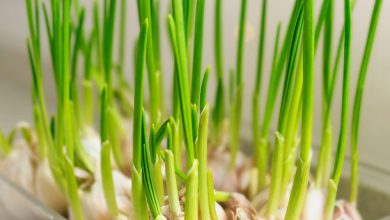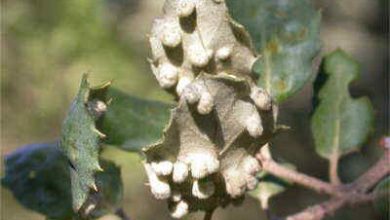Viruses in plants: How to eliminate viruses from plants?
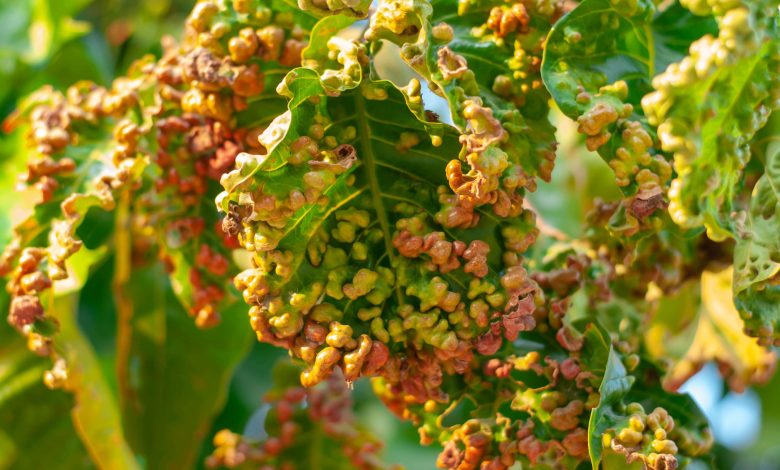
Hello farmers! Today’s article aims to learn how to identify and prevent the main viruses in garden plants. I remind you that viruses are not considered a pest for the plant but a disease (just like fungi or bacteria).

Viruses in plants: characteristics
Viruses are microscopic infectious agents made up of a set of nucleic acids. They are generally encapsidated (have a capsule) and are only capable of replicating inside the host cell. They do not have energy production or protein synthesis systems. To be considered a virus, it has to be transmissible and cause disease (except for persistent viruses).
As a curiosity, the oldest illustrations showing symptoms produced by viruses in plants date back to the 17th century, when Dutch paintings of tulips became fashionable. Many of the tulips that appear in these paintings show white stripes on the flowers.
This phenomenon is known as «color breakage». The tulips that had these stripes reached astronomical prices, being the origin of one of the first speculative bubbles recorded in history. In the 20th century it was discovered that color breakage was due to a virus transmitted by aphids.

Potato virus (Potato Virus X or PVX)
Potato virus is highly infectious and is transmitted by contact. It mainly affects solanaceae (potato and tomato). Temperatures between 16-20ºC and cloudy weather favor the expression of symptoms.
Potato virus symptoms
In potatoes, it produces mottled or mosaic symptoms and can reduce production by up to 35%. In tomato the symptoms are a slight mottling on the leaves. The leaves in both cases have a wrinkled appearance.
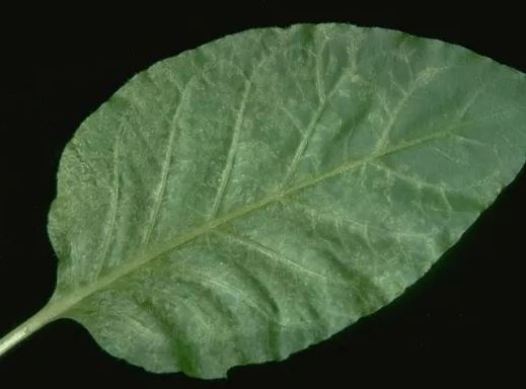
There is another type of virus, known as PVY, whose symptoms are similar but this time the leaves have necrotic spots or rings.
Potato virus control
- Remove plants with symptoms
- Use certified tubers and seeds
- Disinfection of tools
Cucumber mosaic virus (PepMV)
The species most affected by this virus are Solanaceae, highlighting tomato and cucumber. Its expression is favored in cold times and with little light.
These viruses can be transmitted in several ways:
- By contact between plants or when carrying out tasks in the orchard.
- We must pay attention to the seeds as there may be viruses in them.
- Through the water or the ground.
- Some types of insects, such as the bumblebee, can disperse the virus in their pollination activity.
Cucumber Mosaic Virus Symptoms
The symptoms and damage are highly variable depending on the environmental conditions and the type of crop. In extreme cases, it can cause wilting and death of plants.
Cucumber mosaic control
- Eliminate the remains of the previous crop. The substrate must be left clean for at least 6 weeks.
- Soil disinfection, irrigation, machinery, etc.
- Eliminate weeds.
- Use certified material.
Cucumber yellow vein virus (CVYV)
It is transmitted through Bemisia tabaci (whitefly) and generally affects cucumber, melon, watermelon and courgette.
Symptoms of Cucumber Yellow Vein Virus (CVYV)
Initially, it produces a more or less obvious lightening of the veins (the nerves of the leaves turn yellowish). This is followed by mosaic or cracking of the fruits and, finally, the infected plants become necrotic.
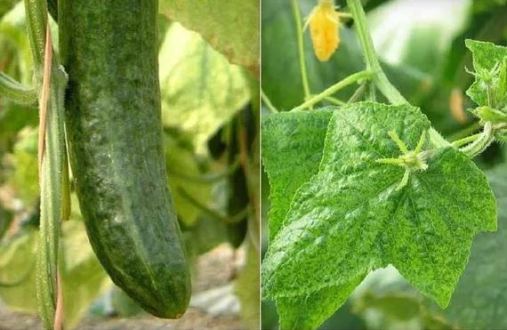
Cucumber yellow vein virus (CVYV) control
- Rest period of at least 1 month between crops.
- Control of whitefly populations (Bemisia tabaci).
Tomato spoon virus (TYLCV)
It mainly affects tomato and is transmitted through the seed or by Bemisia tabaci (whitefly). It usually occurs in the Mediterranean region.
Tomato Spoon Virus Symptoms
The most characteristic symptom is that the leaves are curved, acquiring the appearance of a spoon. Most flowers drop prematurely and can cause stunting of the plant.
Control is based on monitoring whitefly populations, especially at the beginning of the crop.
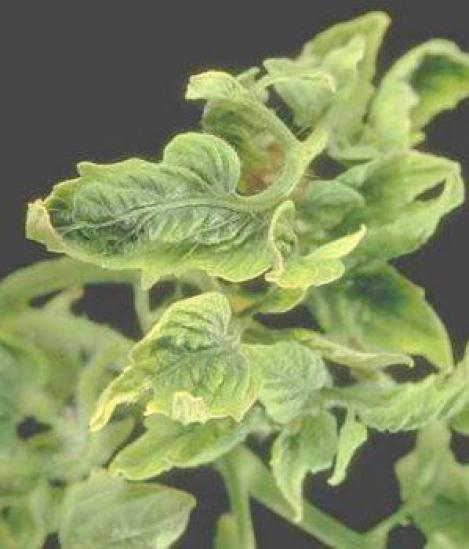
Tomato Leaf Curl New Delhi Virus (ToLCNDV)
First described in 1995 as a variant of the virus causing tomato yellow curl affecting tomato crops in India. It is transmitted through the white fly.
Symptoms of ToLCNDV
The main symptoms are slight bulges in cucumber, deformations in zucchini and, sometimes, yellowing. It also affects other crops and weeds of various species.
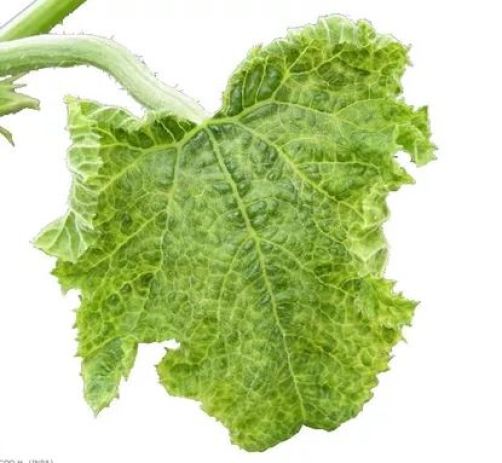
Control of ToLCNDV
- Control whitefly populations.
- Destroy affected plants.
- Use plant material from healthy seedbeds.
References
- Tellez, M., Simon, A., Rodriguez, E., Janssen, D. (2017). Control of Tomato leaf curl New Delhi virus in zucchini using the predatory mite Amblyseius swirskii. Biological Control, 114, 106-113.
- Hasiów-Jaroszewska, B., Komorowska, B. (2013). A new method for detection and discrimination of Pepino mosaic virus isolates using high resolution melting analysis of the triple gene block 3. Journal of Virological Methods, 193 (1), 1-5.
- Esfandiari, N., Sefidbakht, Y. (2018). An isolate of Potato Virus X capsid protein from N. benthamiana: Insights from homology modeling and molecular dynamics simulation. International Journal of Biological Macromolecules,116, 939-946.
I hope you liked the article and that you tell us in the comments if you have ever had viruses on the plants in your garden. At first, they can be more difficult to identify compared to pests, but little by little, we will get there.
Have a nice day!


